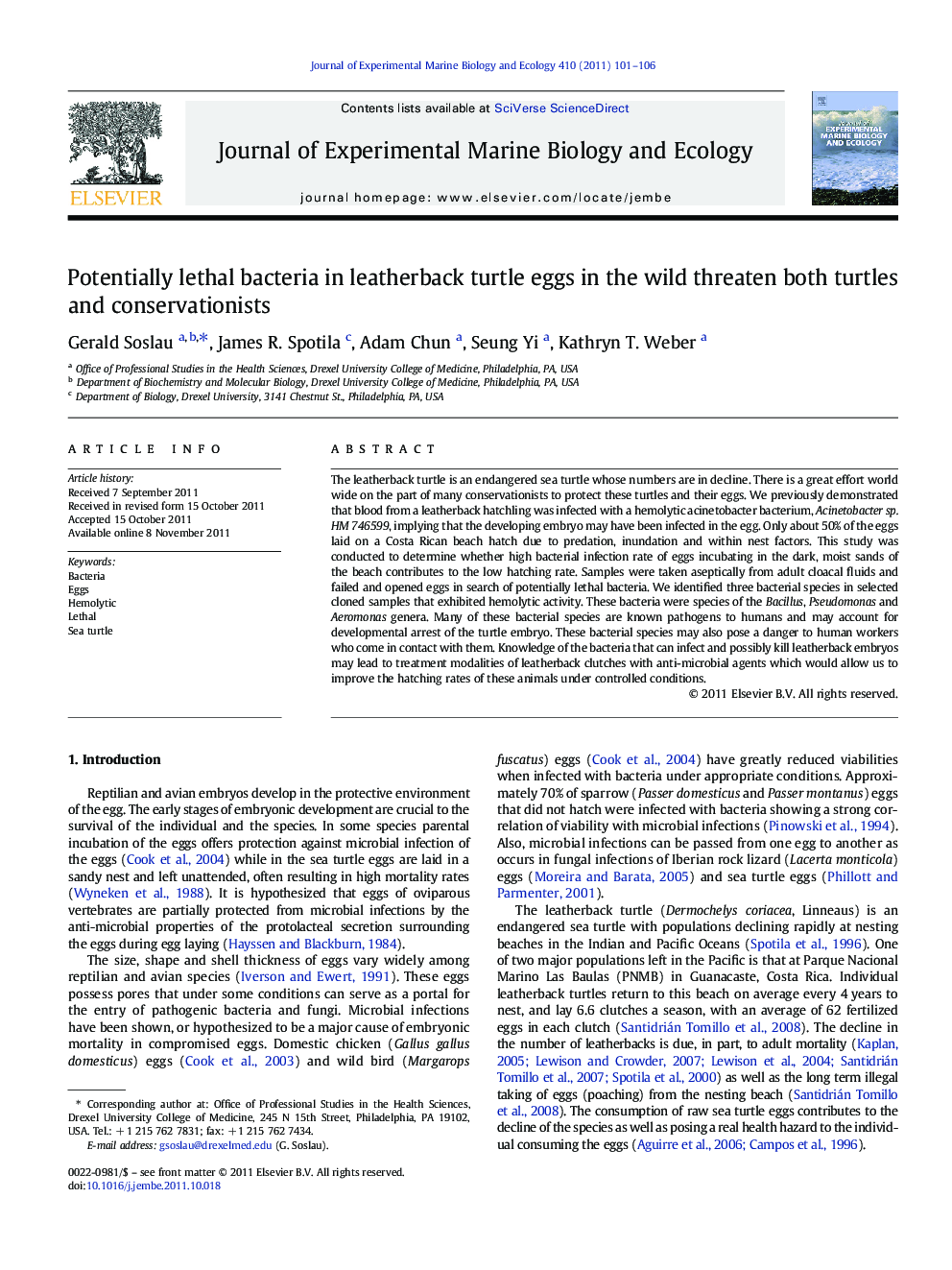| Article ID | Journal | Published Year | Pages | File Type |
|---|---|---|---|---|
| 4396080 | Journal of Experimental Marine Biology and Ecology | 2011 | 6 Pages |
The leatherback turtle is an endangered sea turtle whose numbers are in decline. There is a great effort world wide on the part of many conservationists to protect these turtles and their eggs. We previously demonstrated that blood from a leatherback hatchling was infected with a hemolytic acinetobacter bacterium, Acinetobacter sp. HM 746599, implying that the developing embryo may have been infected in the egg. Only about 50% of the eggs laid on a Costa Rican beach hatch due to predation, inundation and within nest factors. This study was conducted to determine whether high bacterial infection rate of eggs incubating in the dark, moist sands of the beach contributes to the low hatching rate. Samples were taken aseptically from adult cloacal fluids and failed and opened eggs in search of potentially lethal bacteria. We identified three bacterial species in selected cloned samples that exhibited hemolytic activity. These bacteria were species of the Bacillus, Pseudomonas and Aeromonas genera. Many of these bacterial species are known pathogens to humans and may account for developmental arrest of the turtle embryo. These bacterial species may also pose a danger to human workers who come in contact with them. Knowledge of the bacteria that can infect and possibly kill leatherback embryos may lead to treatment modalities of leatherback clutches with anti-microbial agents which would allow us to improve the hatching rates of these animals under controlled conditions.
►Hemolytic bacteria are found in failed leatherback turtle eggs. ►Four hemolytic bacterial genera were identified associated with leatherback eggs. ►Leatherback turtle egg hatching rates are only about 50% on a Costa Rican beach. ►Non-endangered avian/reptilian species' infected eggs correlate with embryo death.
